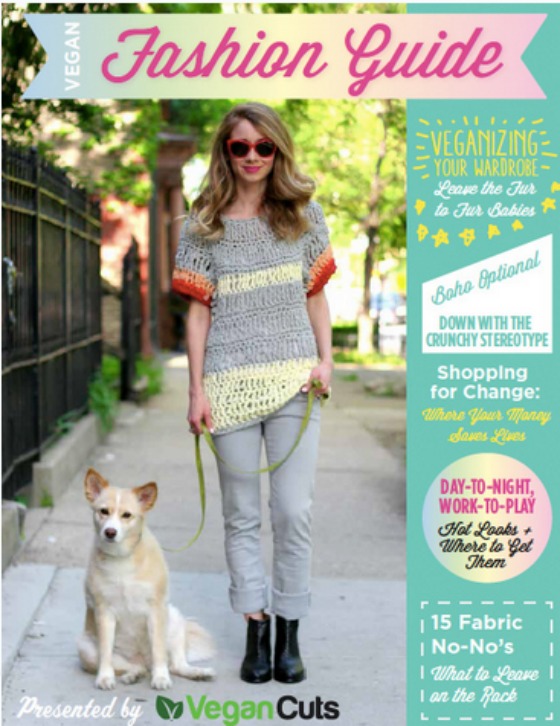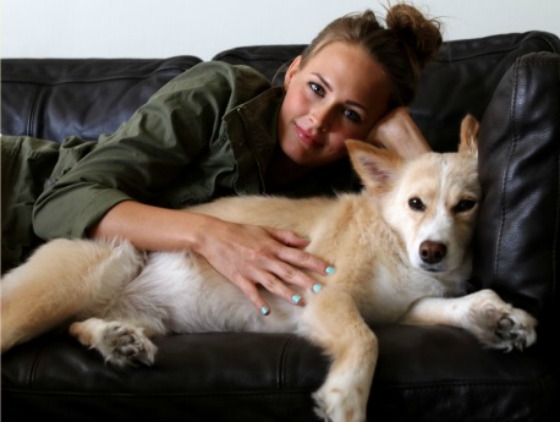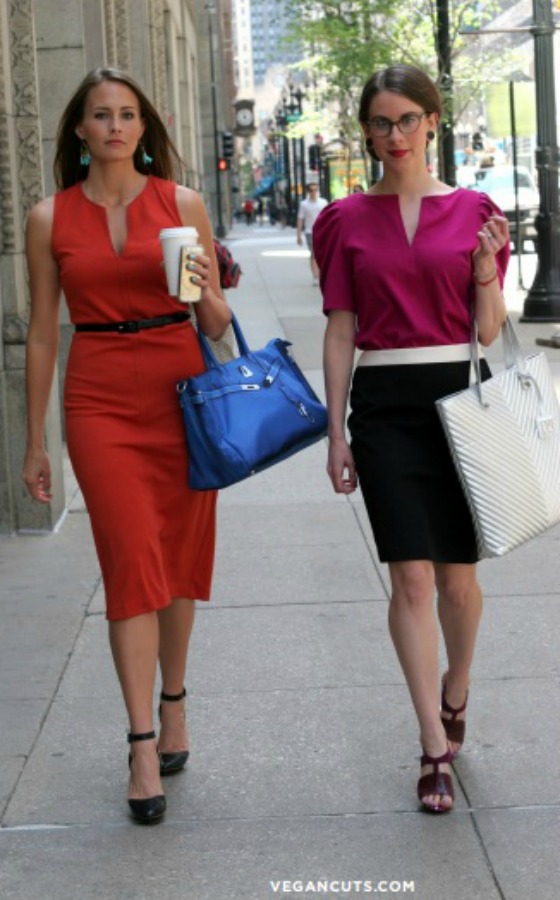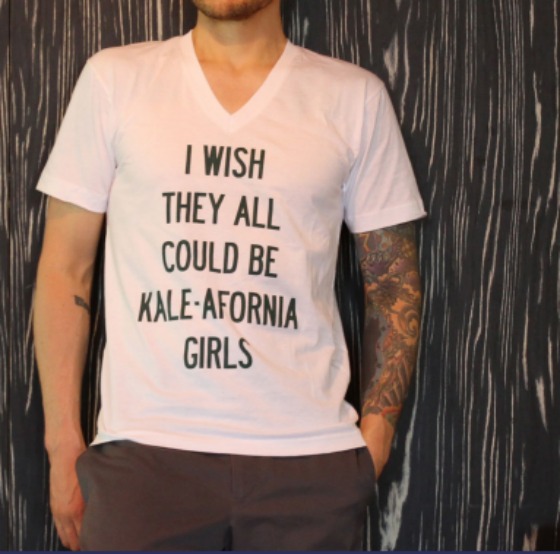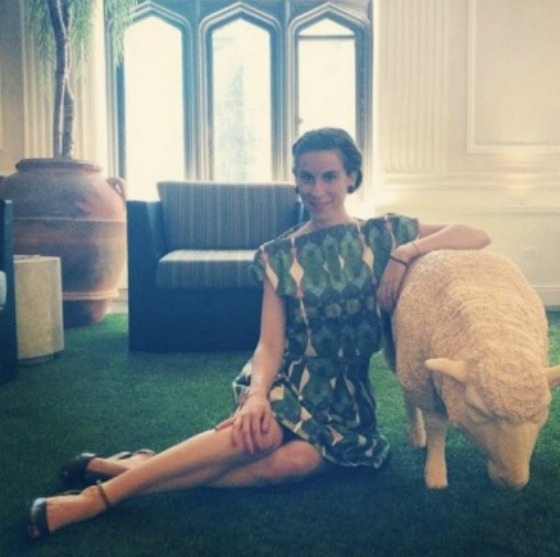
Vegan Fashion Guide: The How, the Why, The Fabulous
Guys, The Vegan Fashion Guide is here. I seriously cannot deal with my excitement. I’m squealing, my cats are confused, I’m breathing into a paper bag to calm myself. So, what’s all the fuss about?
First of all, I love being vegan, I love vegan fashion, and I love e-books, so this equation has got me shoving fistfuls of Daiya Cheddar into my mouth to try to calm my nerves. Furthermore, this guide is the perfect fusion of informative articles and beautiful fashion spreads. The Vegan Fashion Guide is presented by Vegan Cuts, the web-based monthly vegan product delivery service.
This guide is chock full of incredible information, like how to veganize one’s closet, the impact of fashion, and more. This is not in a traditional magazine format (huge image, little text, even less actual content). We are talking pages of information.
But don’t go thinking this is all text and no image, either. “‘And what is the use of a book,’ thought Alice “without pictures or conversations?'” Never fear! The photo shoots in the Fashion Guide are stunning, with gorgeous models, lovely locations, and impeccable styling.
The “9-5 and Beyond” shoot is hands down my favorite. As someone who works in an office during the day (and who secretly wants to be the vegan Olivia Pope), showing me chic, ethical businesswear is the key to my heart.
There are also selections for guys, who are somewhat underrepresented in vegan fashion. (Pretty much the only time that mostly white cis-gender men are an underrepresented demographic.)
Got my boyfriend’s Christmas present figured out.
The whole guide is incredible, but I have saved the best part for last: It is a free download. Vegan Cuts asks nicely that you spread the word on Facebook and/or Twitter if you liked the Fashion Guide, but they ask nothing more! Not a red freakin’ penny!
This project was co-created by Ashlee Piper, of Little Foxes, who styled the photos, as well as writing content. Jill, the co-founder of Vegan Cuts, is the other co-creator of the Fashion Guide. She was kind enough to answer a few questions for Eco-Chick readers. She is an amazing resource, and her answers are honest, compassionate, and informative:
Eco-Chick: Can you explain to our readers the importance of ethical decision-making and purchasing, as it pertains to clothes? Is it more or less important to support vegan clothiers as opposed to say an ‘ethically’ sourced animal-derived retailer?
Jill Pyle, Co-founder of Vegan Cuts: Veganism started with food for me and extended out from there to apply to everything from the dish soap that I use to the shoes that I wear. Most vegans take a similar approach and don’t really see such as a thing as “ethically sourced” animal-derived products since it’s speciesist to think that one being’s life is yours to end for a cute pair of boots.
I also highly believe that you have to make your own decision when it comes to ethical decision-making and purchasing. There’s always going to be that one person who asks you all about your veganism just so they can tell you about the bugs that are killed when your kale is harvested or so they can make the argument that your way of thinking values animals over humans. When these situations come up, I just remember that all I can do is always focus on my goal—doing the least harm possible.
EC: As an almost-15 year vegetarian and a newly-minted vegan, I am constantly on the lookout for secretly not-vegan ingredients in my food (I had a narrow miss with some pasta last night). What are some surprising not-vegan clothing materials that ethical buyers should know about?
JP: First of all, welcome to the club!
I’d say what’s most surprising to me—and bear with me because this is a bit controversial—is faux fur. While some faux fur is seriously faux, stories like this one from the Humane Society just further enforce the fact that it’s important to know the full story before you whip out your credit card.
EC: I’ve been reading a lot about people who buy second-hand leather, or keep their old wool sweaters, to avoid waste. Or there are those who purchase vintage fur or leather, but don’t buy anything that isn’t vegan at a retail level. How do you feel about this? Is it vegan?
JP: I’m a strong believer in doing what you think is right, as long as you’re not harming anyone else. That being said, I think that you need to make your own decision when it comes to where you draw the ethical line. Secondhand shopping is a very sustainable option and obviously much better than funding the creation of new animal-derived products by buying retail, but there’s also that whole problem of sending the wrong message about what’s ethical by wearing leather boots or a leather jacket.
EC: Vegan materials often have a reputation for being less sturdy and durable that non-vegan items (like leather boots, for example). Can you address this concern for our readers?
JP: Oh man, a good shopping spree would do well to end this untrue rumor! Just taking a quick peek at my closet, I see pieces that I’ve had for a year or more made by Vaute Couture, Cri de Coeur, Nicora Johns and so many more stylish brands that put animal-derived fashion to shame.
EC: If someone wants to veganize their wardrobe, where/how should they start?
JP: That’s just the sort of question that we created The Vegan Fashion Guide to help answer! Download it here to read our whole section on Veganizing Your Wardrobe. In the meantime, here are a few quick tips to get you started:
-
Weed through your wardrobe: Take a look at what you’re working with and determine which pieces need to go. It’s understandable if this is a longer process, as many years of unconscious shopping may have led to quite a collection. Once you’ve got a Get-Rid-Of pile, consider donating to local philanthropic outlets—think wildlife rehabilitation centers for your furs, Dress for Success programs for non-vegan work attire, or Goodwill for any and all items—or selling the items that are too high dollar to donate.
-
Reduce and reuse: Most of my greatest finds are from luxury consignment, thrift, resale and vintage stores! These pieces not only help to reduce waste since they’re not being thrown away, but they’re often more unique since they come with a story. You’re not going to see nearly as many people walking around with that perfect printed top that you grabbed from the local thrift shop as you will see rocking that just-released tee from the local Big Box store.
-
Do your research: Read our tips for reading labels like a pro so you know what to look for and print our handy one pager about animal-derived materials so you’re not left guessing what Karakul is and if anyone’s mom was hurt in order for it to keep you warm.
Check out The Vegan Fashion Guide, available for free on the Vegan Cuts webpage. You can also check Vegan Cuts out on Facebook and Twitter.
Related on Eco-Chick:



